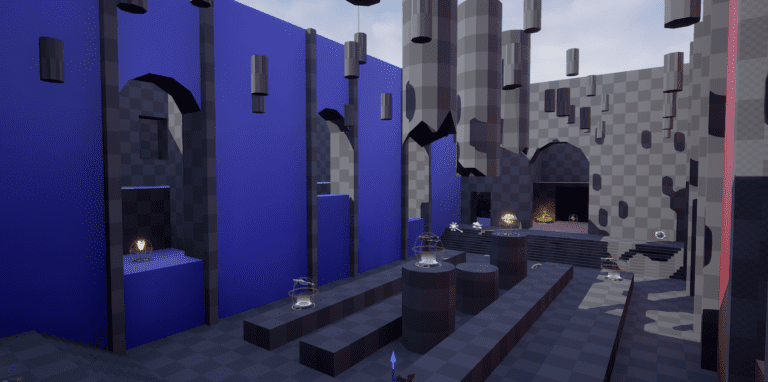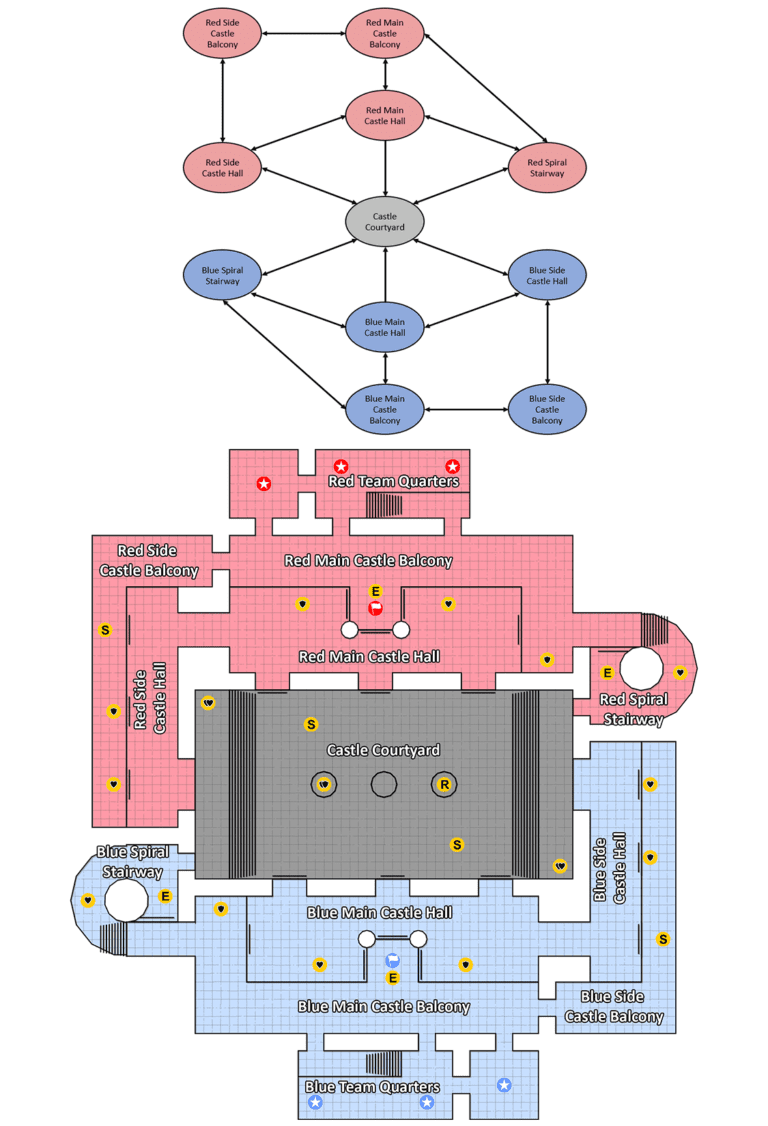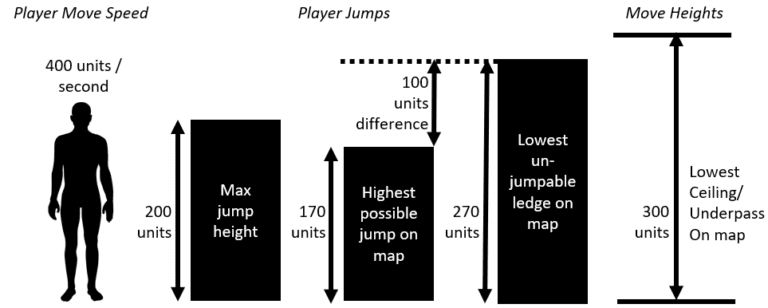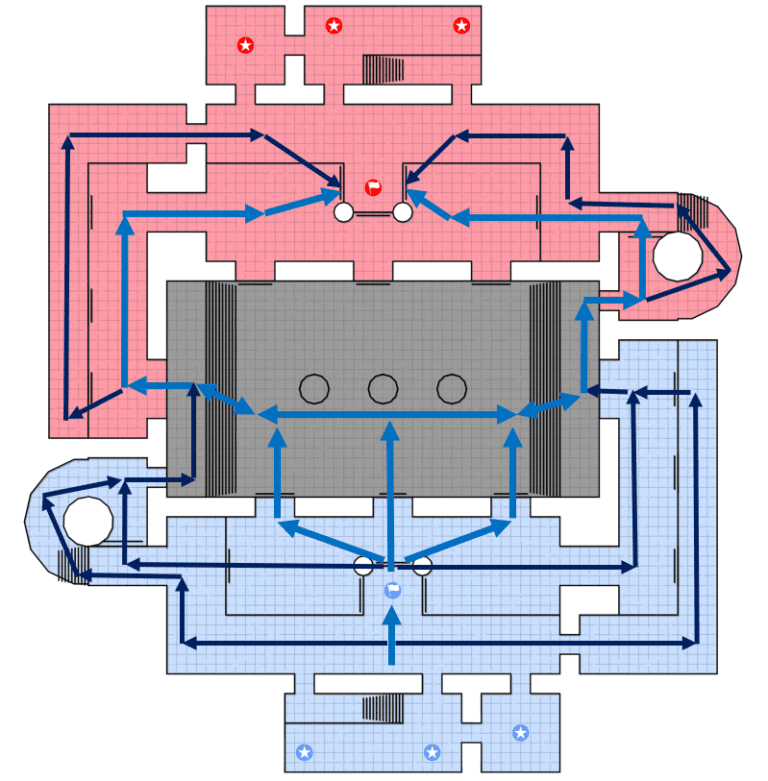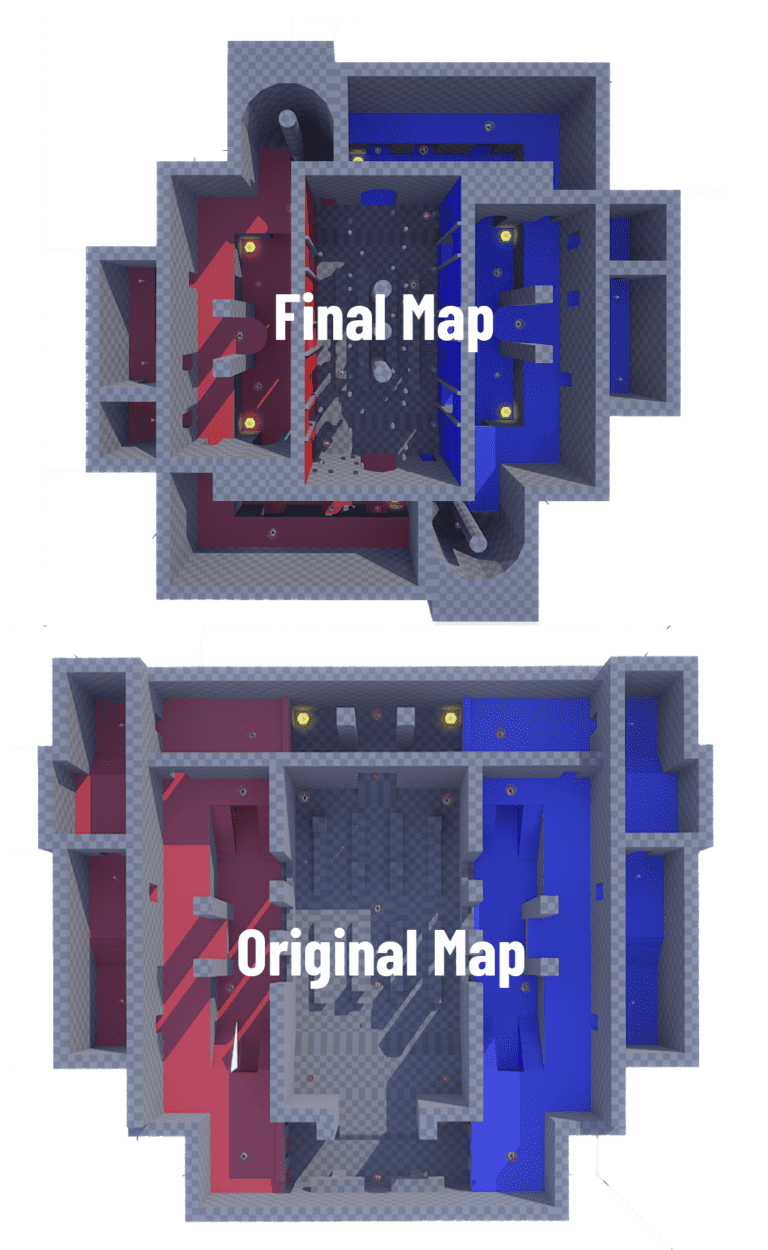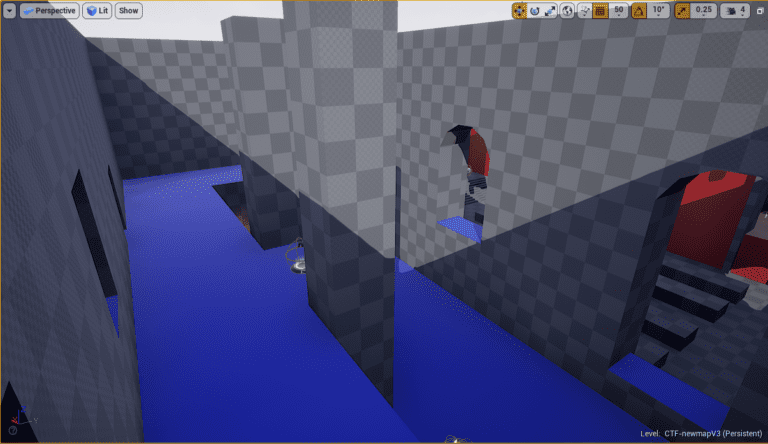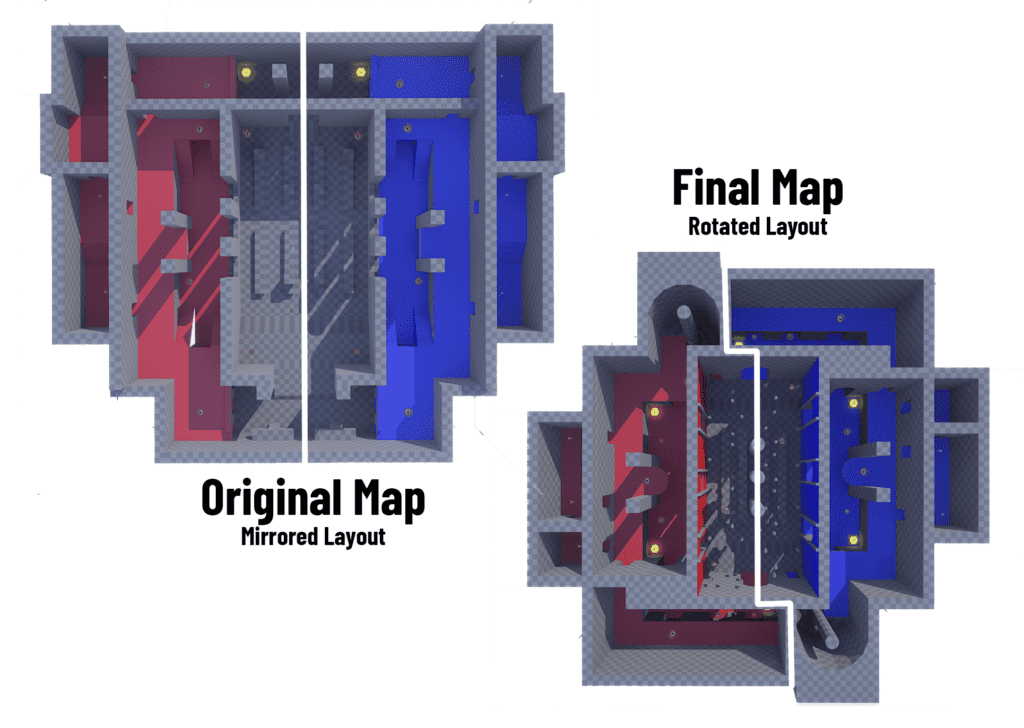Battle of the
Reddingtons and Blueroses
Team: Solo Project
Role: Level Designer
Timeline: 2 Months
DESCRIPTION
Battle of the Reddingtons and Blueroses is an Unreal Tournament custom map loosely based off of “The Great Hall” from Harry Potter. I created this for a 2nd year level design assignment, and went through the full process of documenting, greyboxing, and playtesting over half of a term.
TOOLS
- Unreal Engine
- Unreal Tournament Editor
- Miro
JUMP TO SECTION
PROJECT SHOWCASE
DOCUMENTATION
LEVEL DESIGN DOCUMENT
Before and during the development of my level, I kept track of reference images, metrics, desired routes, and item placements in a level design document. This way I could make changes to my level quickly, and spot potential issues early on.
DOCUMENTATION TAKE AWAYS
Documentation drastically helped speed up the level design process for this project. By starting out with graph paper and diagrams, I was able to create mock-ups to base my later designs off of. This workflow broke the project into smaller pieces, making it much less daunting and allowing for larger changes to be made at earlier points in development.
LEVEL DESIGN
GREYBOXING
Once I had a diagram of my level made, I moved onto greyboxing. I completed the greyboxing phase in multiple stages, playtesting each iteration before moving onto the next.
This workflow allowed me to spot issues in my level I wouldn’t have seen on my own. For example, earlier iterations of my level were much larger than the final version. By playtesting with others I learned just how empty the map felt, and was able to reduce the size of future versions accordingly.
Once I was happy with the map’s layout, I added game art to a select portion of the map to better fit the original theme.
PLAYTESTING
I conducted multiple playtests of my level throughout its development, both with individuals and with groups.
These playtests were done online and in person, and consisted of playing regular matches, and then recording feedback.
By conducting playtests, I was able to learn what flaws my level had, and fix them accordingly. For example, early on I learned that my map’s mirrored layout was confusing for players to navigate, so I changed it to a rotated layout instead.
LEVEL DESIGN TAKE AWAYS
This assignment showed me just how important iteration and playtesting is when designing levels. No level is perfect on the first try, and having a new set of eyes look at what you’ve created can reveal problems you never knew existed. By thoroughly iterating and playtesting during the greybox phase, you can avoid massive revisions during later phases of development when change is less practical.

